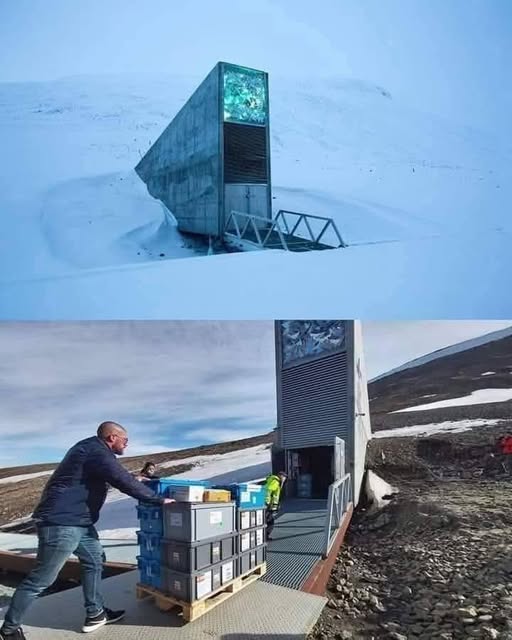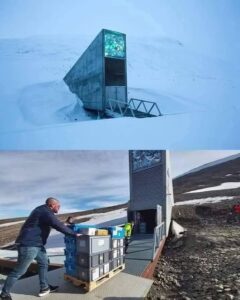Svalbard Seed Vault: Humanity’s Backup in Case of Catastrophe

The Svalbard Global Seed Vault: Humanity’s Food Insurance Policy at the Edge of the World
Tucked away beneath layers of ice and rock, deep within the Arctic Circle, lies one of humanity’s most important yet least-known treasures—the Svalbard Global Seed Vault. Often called the “food vault at the end of the world,” this facility is quietly safeguarding the genetic future of agriculture, ensuring that even in the face of catastrophe, life can grow again.

Where Is It?
The vault is located on the Norwegian island of Spitsbergen in the Svalbard archipelago—about 1,300 kilometers from the North Pole. This remote, frozen wilderness might seem like an unlikely place to store the world’s most precious seeds, but its location was deliberately chosen. Svalbard is geologically stable, has naturally low temperatures, minimal human interference, and exists under the political neutrality of Norway, a country known for its commitment to peace and environmental stewardship.
Why Was It Built?
Launched in 2008, the seed vault was created with one powerful mission: to protect global crop diversity. With rising threats like war, climate change, disease, and natural disasters, there is an ever-growing risk that local seed banks—where countries and regions store the seeds of their native crops—could be damaged or destroyed. The Svalbard Vault acts as a fail-safe backup, preserving duplicates of these seed collections for future retrieval.
It is essentially a global agricultural insurance policy, designed not for everyday use but for emergencies, when food systems are at risk or biodiversity is lost.
How Does It Work?
The vault is built into a mountain, where Arctic permafrost keeps temperatures naturally cold, enhancing the longevity of the seeds stored within. Even if power systems fail, the mountain itself acts as a freezer. Inside, high-security chambers can house up to 4.5 million seed varieties, including staple crops like wheat, rice, and maize, as well as rare and regional plants that are crucial for food diversity and climate resilience.
Countries and organizations submit seed samples in sealed packages. These are stored on shelves in sub-zero temperatures, but remain under the ownership of the depositing countries—much like a safe deposit box.
Has It Ever Been Used?
Although designed for rare use, the vault has already proven its worth. During the Syrian civil war, conflict damaged the gene bank in Aleppo. Scientists who had previously deposited seeds in Svalbard requested access to re-establish lost collections in Lebanon and Morocco. It was a real-world test of the vault’s mission—and it worked.
A Global Collaboration
As of today, over one million seed samples have been deposited by more than 70 institutions and nations. Every deposit into Svalbard is a gesture of hope and cooperation, a signal that even in a divided world, we can come together to protect something as universal as food.
The vault itself is managed through a partnership between the Norwegian government, the Crop Trust, and Nordic Genetic Resource Center (NordGen). This collaboration ensures that funding, technology, and scientific expertise are all aligned toward a shared goal: safeguarding biodiversity for the generations to come.
A Symbol of Quiet Hope
The Svalbard Global Seed Vault doesn’t make headlines often. It doesn’t need to. Its purpose is quiet, powerful, and long-term. In a world marked by uncertainty, it stands as a symbol of resilience—a frozen ark, holding the keys to renewal if disaster strikes.
It reminds us that our ability to feed ourselves depends not only on technology or politics but on diversity and foresight. And that even at the ends of the Earth, hope can be planted and protected—one seed at a time.
